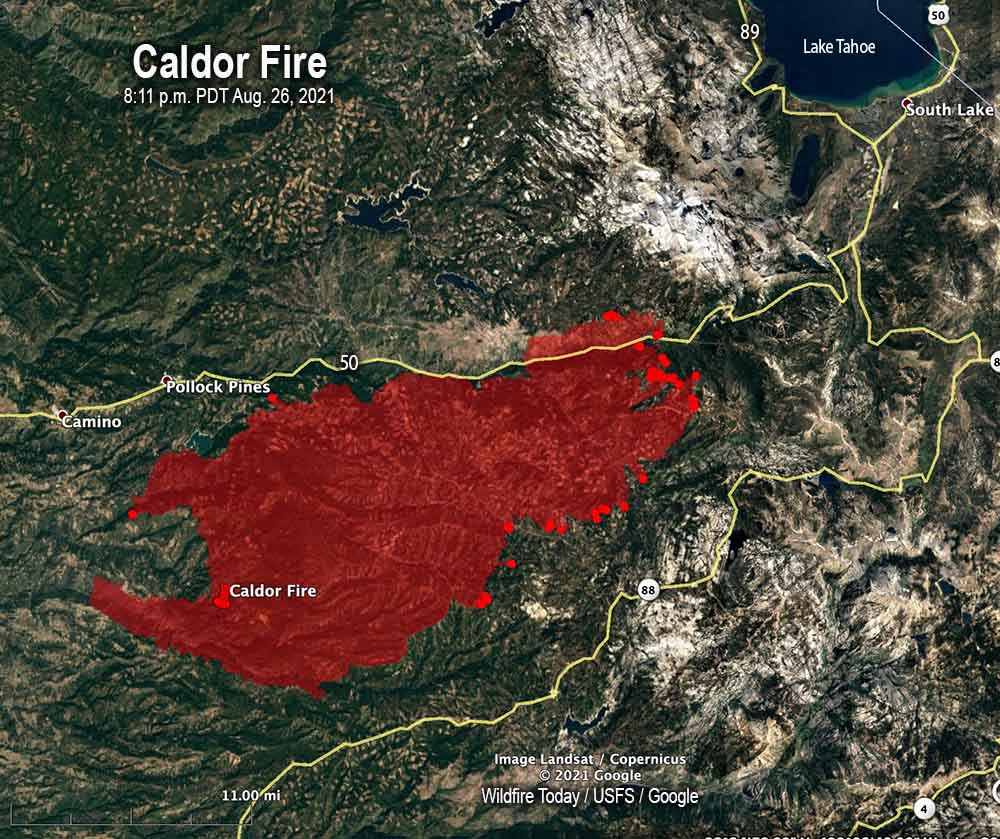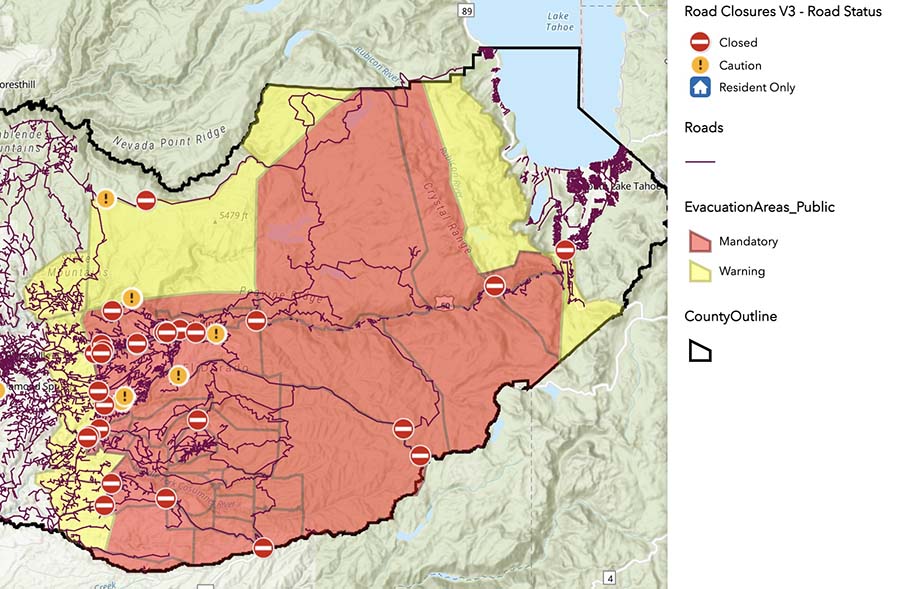7:41 p.m. PDT Aug. 30, 2021

The northeast and east sides of the Caldor Fire were very active again Monday. The northeast side has reached Lower Echo Lake, the community of Echo Lake, and Echo Summit. Where Highway 50 makes a 180-degree turn at the Summit it had crossed the highway twice when it was mapped by a fixed wing aircraft at 4 p.m., including two spot fires east of Echo Lake. At that time the fire was spreading south and east of the Sierra-At-Tahoe resort and also west of Nebelhorn. It was less than a mile west of Highway 89.
To see all articles on Wildfire Today about the Caldor Fire, including the most recent, click HERE.
The southeast side crossed Highway 88 north of Kit Carson and west of Kirkwood. There were numerous spot fires west of Tragedy Spring.

The following is part of a description of Monday’s activities from the Incident Management Team Monday afternoon:
Fire behavior increased in the northeast and eastern divisions early in the morning due to the expected southwest flow returning and poor overnight humidity recovery. The current RED FLAG WARNING has been extended to 9/1/21 ending at 23:00. Wind speeds continue to accelerate through the steep drainages resulting in gusty and erratic winds. Spotting distances have been between 0.75 and 1 mile with the Probability of Ignition at 90%. Active crown fire runs were observed in multiple divisions with rates of spread above 165 ft/min.
South Lake Tahoe is now under a mandatory evacuation order.

A detailed zoomable map showing the areas under evacuation orders is available.
10:015a.m. PDT August 30, 2021

The Caldor Fire southeast of Lake Tahoe ran to the east and northeast Sunday spreading along the Highway 50 corridor for five miles past Sierra-At-Tahoe, and Phillips. Spot fires were occurring up to a half mile ahead of the fire south of Echo Lake and Nebelhorn.
Additional evacuations were ordered. South Lake Tahoe is in evacuation warning status, meaning be prepared to immediately leave if ordered. Several areas were placed under mandatory evacuation including Meyers.

KCRA reported that the South Lake Tahoe police confirmed that Barton Memorial Hospital is being evacuated.
Continue reading “South Lake Tahoe under evacuation order due to Caldor Fire”

















